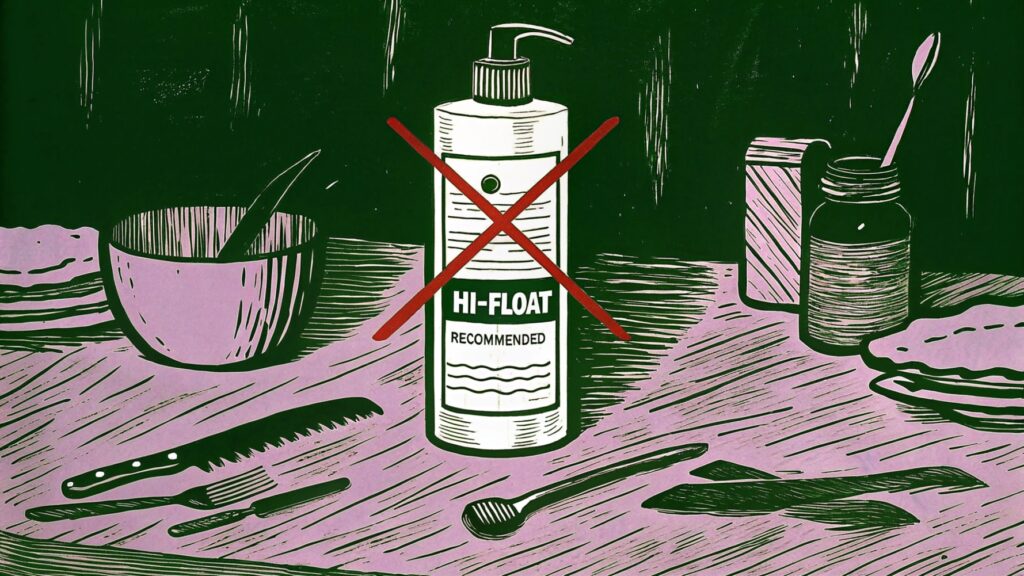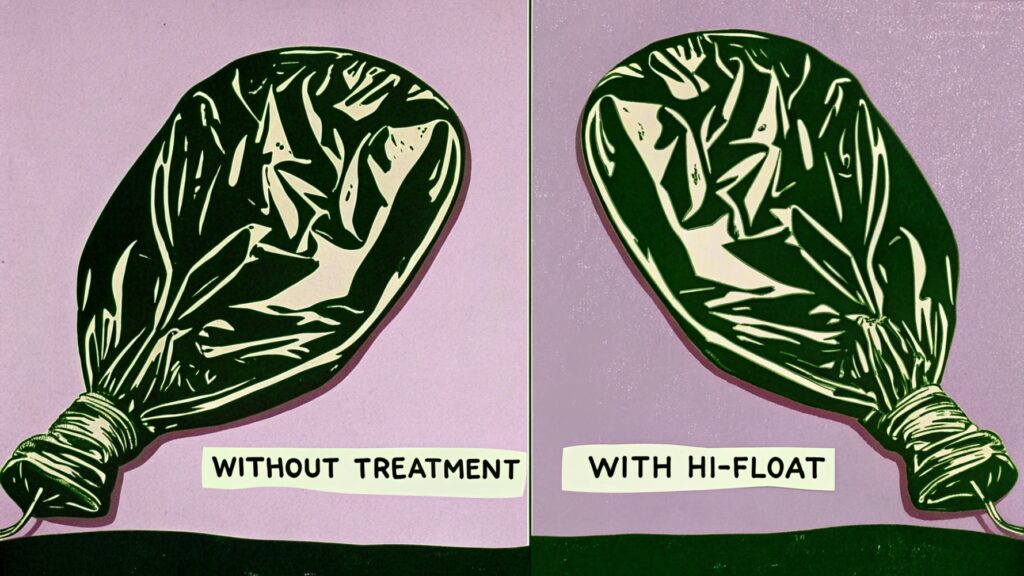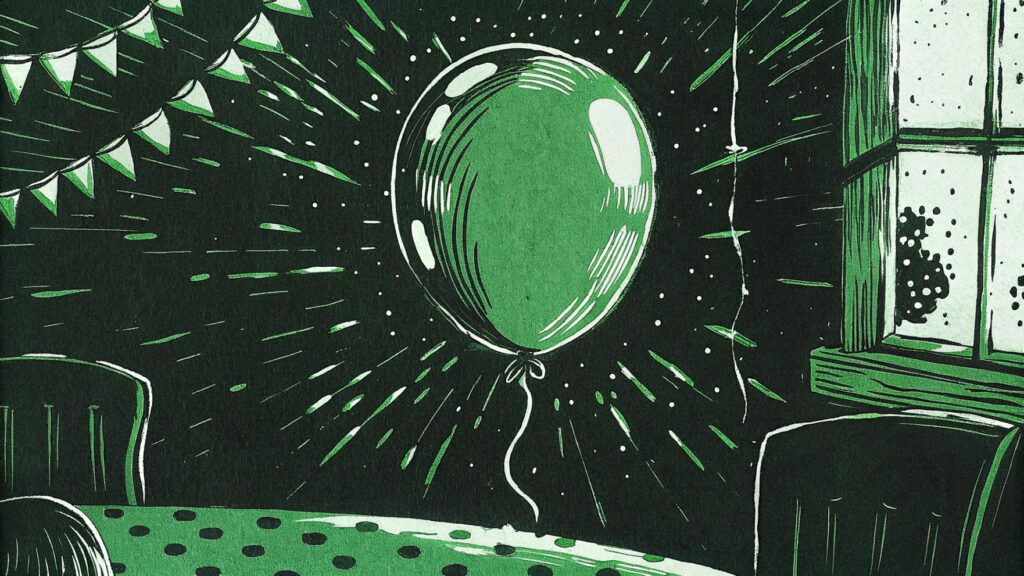How to make latex balloons float longer?
Are your carefully inflated latex balloons sinking too soon? It is frustrating when your festive decorations lose their lift. You want your balloons to stay buoyant and beautiful for longer periods.
To make latex balloons float longer, use high-quality, low-porosity balloons1. Treat the inside of the balloon with a special sealant like Hi-Float2 before inflation to reduce helium leakage. Inflate them fully with pure helium3, and keep them in a stable, cool environment4 away from direct sunlight and sharp objects.

I know the disappointment of seeing balloons deflate before the party is over. It is a common problem, but fortunately, there are effective strategies to help your latex balloons stay aloft for extended periods.
How Can I Extend the Float Time of Latex Balloons?
Do your latex balloons seem to lose their float too quickly? It is a common issue for many event planners5 and party hosts. You want your decorations to last through the entire celebration.
To extend the float time of latex balloons, select high-quality balloons with thick walls6 and low porosity7. Use a balloon treatment8 like Hi-Float to seal the pores of the latex. Inflate balloons fully with pure helium, and avoid over-inflation9 or under-inflation10 for optimal buoyancy and lifespan.

From my experience in the balloon industry, I have learned that the lifespan of a latex balloon depends on several factors. These factors include the quality of the balloon, the gas used for inflation, and the environmental conditions. High-quality latex balloons, like those AIHUA BALLOON makes, have a dense structure. This structure helps minimize helium leakage. Helium atoms are very small. They can escape through the tiny pores in latex over time. Adding a sealant creates a barrier inside the balloon. Pure helium also makes a difference. Helium blends with air will reduce flotation time. Always make sure the balloon is inflated to its proper size. Under-inflation means less lift. Over-inflation can stress the latex and create micro-tears. These tears allow helium to escape faster. Environmental factors also play a big role. Extreme temperatures, direct sunlight, and sharp objects are all bad for balloon longevity11. Keeping balloons indoors in a stable, cool environment4 helps preserve their float time. Humidity also impacts latex. High humidity can make latex softer and more porous. This speeds up helium diffusion. Always store and display balloons in optimal conditions for the best results.
Selecting the Right Balloons for Longevity
What type of latex balloon gives you the longest float time? This is a critical first step. The quality of your balloon directly affects how long it stays inflated.
| Factor | Description | Impact on Float Time |
|---|---|---|
| Material Quality | High-grade natural rubber latex provides a denser, less porous surface. This reduces the rate at which helium can escape. Poor quality latex may have inconsistent thickness or microscopic holes. These imperfections allow gas to diffuse faster. Choose reputable brands that are known for their strong, consistent balloon materials. | Higher quality means slower helium permeation and longer float. |
| Wall Thickness | Thicker latex walls create a stronger barrier against helium diffusion. However, there is a balance. Excessively thick walls can make the balloon too heavy, reducing its overall buoyancy. The ideal thickness provides durability without sacrificing lift. | Optimally thick walls6 slow helium escape and maintain lift. |
| Manufacturing Process | Balloons produced with strict quality controls have fewer defects. These defects include pinholes or weak spots. Consistent inflation and curing processes during manufacturing ensure the latex is evenly distributed and fully cured. This results in a more uniform and less porous balloon. | Superior manufacturing leads to fewer defects and better gas retention. |
| Porosity | Latex is naturally porous. This means it has tiny openings that allow gas molecules to pass through. High-quality manufacturing aims to minimize this porosity. The goal is to create a more effective barrier against helium. Using specific compounds during production can also enhance the barrier properties of the latex. This makes the balloon material less permeable to gas. This is a key factor in extending float time. This is also why choosing quality products like those from AIHUA BALLOON is so important. | Lower porosity7 means slower helium escape and extended float. |
What Are the Best Methods for Making Latex Balloons Last Longer in the Air?
Are you looking for reliable ways to keep your latex balloons floating for days, not just hours? You want your balloon arrangements to impress. You also want them to last throughout your event.
The best methods for making latex balloons last longer involve using an internal sealant like Hi-Float, inflating with pure helium, avoiding extreme temperatures, and selecting high-quality, thick-walled balloons. Keep balloons indoors and away from direct sunlight or sharp objects, as these can significantly shorten their float time.

Over the years, I have seen many ways people try to make balloons last longer. Some work well, and some are just myths. The most effective strategy is a multi-pronged approach. It combines proper preparation, the right materials, and good environmental control. I always recommend using a balloon treatment. This is the single most important step for extending float time. It forms a temporary coating inside the balloon. This coating reduces how fast helium escapes. Another key point is the gas itself. Always make sure you are using 100% helium. If your gas is mixed with air, the balloon will not float as long. The air adds weight and takes up space that helium could fill. Keeping balloons at room temperature is also important. Heat makes latex expand and contract, which wears it out faster. Cold can make latex brittle. This can lead to small cracks. Sunlight, in particular, is harmful. UV rays degrade latex. This makes it porous. Also, avoid anything that can snag or pop the balloon. This includes rough surfaces and sharp corners. Thinking about all these steps helps you get the most out of your balloons.
Treating Balloons for Extended Float
What are the most effective treatments for making latex balloons float longer? Proper treatment can dramatically increase balloon float time.
| Treatment Type | Description | Application Method | Benefits | Considerations |
|---|---|---|---|---|
| Hi-Float/Ultra Hi-Float | These are water-based liquid solutions. They dry to form a non-toxic, clear coating inside latex balloons. This coating acts as a barrier. It coats the pores of the latex. This significantly reduces the rate at which helium molecules escape. Hi-Float increases float time by many times. Regular latex balloons might float for 12-20 hours. With Hi-Float, they can float for several days, or even weeks. It is primarily used for helium-filled balloons. | Apply a small amount of the gel inside the balloon using a pump dispenser. Work the gel around to coat the entire inner surface before inflating. It is crucial to use the correct amount based on the balloon size. Too much can weigh down the balloon. Too little will not be effective. The balloon needs to be inflated immediately after application for the best results. The internal coating must be completely dry before a long float time can be expected. | Dramatically extends float time (up to 25 times longer than untreated balloons). Seals pores effectively. Non-toxic and safe once dry. | Requires practice to apply correctly. Adds a small amount of weight to the balloon. It can make balloons opaque if not properly spread. There is a drying time required. This can affect event setup if rushed. Not effective for air-filled balloons. |
| Balloon Shine Spray | While not directly extending float time in the air, these sprays improve the appearance of latex balloons. They create a protective coating on the outside of the balloon. This coating protects against oxidation. Oxidation causes latex to become dull and cloudy. These sprays can indirectly preserve the balloon's integrity by protecting the outer surface. This can prevent premature weakening that might lead to faster helium escape. They are primarily for aesthetic purposes. | Spray a fine mist onto the inflated balloon's exterior. Gently wipe with a soft cloth for an even coat and shine. It is applied after inflation. | Maintains balloon luster and prevents oxidation (dulling). Keeps balloons looking fresh and vibrant for longer, especially in outdoor settings. Protects the outer surface from minor wear. | Does not directly seal pores or prevent helium escape. Only addresses external appearance and some surface protection. Can make balloons slippery. Collects dust if not wiped properly. |
| Other Sealants (e.g., DIY solutions) | Some people try DIY solutions like hairspray or silicone spray. These are not recommended. They are generally ineffective. They can also damage the latex. They may also be toxic. Such solutions do not create a strong enough barrier to prevent helium escape. They might also make the latex brittle or sticky. They can also leave residues. These residues can attract dust. Some may even be flammable. It is always better to stick with products specifically designed for balloons. | Varies widely. Often involves spraying an internal coating into the balloon and then inflating. These methods are not standardized or proven safe/effective. Using non-specific products can damage the balloon and pose safety risks. | None reliably proven. May offer very minimal, short-term surface benefits at best. | Highly ineffective for extending float time. Can damage latex. May be toxic or flammable. Not recommended by balloon professionals. Can leave residue that affects balloon appearance or longevity. |
What Household Items Can I Use to Make Latex Balloons Float Longer?
Are you wondering if everyday household items can help your balloons last longer? It is natural to look for quick, inexpensive fixes. You want to extend your party's festive atmosphere.
No common household items can reliably make latex balloons float longer by preventing helium leakage. Products like hairspray or glue are ineffective and can damage the latex or be unsafe. For a significant extension of float time, a specialized balloon treatment like Hi-Float is necessary, as it is designed to seal microscopic pores in the latex.

I have heard many suggestions over the years about using household items for balloon longevity. Things like hairspray, cooking oil, or even hand sanitizer. From my professional perspective, none of these work. They do not have the right chemical properties to effectively seal the tiny pores in latex. Latex is a natural material, and its porous nature allows helium to slowly escape. Hairspray might make the outside of the balloon shiny. It does not create an internal barrier. In fact, many household chemicals can be harmful to latex. They can make it brittle, sticky, or even cause it to burst prematurely. Some might be flammable when combined with helium. It is important to remember that balloon safety is paramount. Using unapproved substances can create hazards. While it is tempting to find a cheap alternative, the only truly effective solution is a product specifically formulated for balloon sealing. These products have been tested for safety and efficacy. They are designed to interact correctly with latex. This ensures that the balloon performs as expected and remains safe.
Why DIY Solutions Often Fail for Balloon Longevity
What makes household items unsuitable for extending balloon float time? Understanding why DIY solutions are not effective is important.
| Household Item | Common Belief/Intended Use | Reality/Actual Effect on Balloons |
|---|---|---|
| Hairspray | Some believe spraying hairspray inside or outside a balloon will create a seal, helping it float longer or enhancing its shine. The idea is that it creates a sticky, protective layer. | Hairspray contains alcohol and polymers. Alcohol can dry out and break down latex, making it brittle and more prone to bursting. While it may temporarily add a slight shine to the exterior, it does not form an effective barrier against helium escape from the inside. The polymers are not designed to adhere uniformly or create a non-porous film on the interior of a balloon. It can also make the balloon sticky and attract dust and lint. Using it internally is risky and ineffective. It can also be flammable when combined with helium, posing a significant safety hazard. |
| Cooking Oil/Vaseline | Some might think that a thin layer of oil or petroleum jelly inside the balloon could create a physical barrier against gas leakage. They believe it would grease the inside, making it less permeable. | Oily substances degrade latex. Latex is a natural rubber product. Prolonged contact with oils and petroleum-based products will break down the latex structure. This will cause it to weaken, become less elastic, and eventually burst. It will not create a seal. Instead, it will accelerate the deflation process. It also adds significant weight to the balloon, thereby reducing buoyancy. These substances are also difficult to spread evenly inside the balloon. They create uneven weight distribution. This can cause the balloon to tilt or sag. It is not an effective or safe solution. |
| Glue (e.g., PVA glue) | The thought is that liquid glue, spread inside, would dry and form a solid, impermeable layer, much like specialized sealants. | Most household glues are designed to bond surfaces together. They are not formulated for coating elastic internal surfaces. When applied inside a balloon, they would likely dry unevenly. They would crack as the balloon is inflated or shrinks. They would also add significant weight, drastically reducing float time. Many glues contain chemicals that are not suitable for internal use in a balloon. They could be toxic or irritate if inhaled. They could also cause the latex to become stiff and lose its elastic properties, making the balloon prone to bursting. This is not a viable or safe method. |
| Dish Soap/Water | Some people might try to use a soapy water solution to coat the inside, hoping the soap creates a temporary film to reduce gas escape. | A water-based solution, especially with soap, will add moisture inside the balloon. This makes the latex softer and more porous. It can accelerate helium leakage, not prevent it. The water also adds weight, reducing buoyancy. The soap itself does not form a cohesive, impermeable barrier. Instead, it creates a very temporary, weak film that is easily broken. It will not dry properly inside an inflated balloon, leading to a mess and ineffective sealing. This method is generally counterproductive and messy. |
Is There a Way to Make Helium-Filled Latex Balloons More Durable?
Do you want your helium-filled latex balloons to withstand more handling and varied environments? It is frustrating when balloons pop easily or degrade quickly.
To make helium-filled latex balloons more durable, choose high-quality balloons with consistent wall thickness. Avoid over-inflation. Also, keep them at stable room temperatures away from direct sunlight, sharp objects, and rough surfaces. Pre-stretching balloons slightly can improve elasticity, and using a sealant like Hi-Float can also reinforce the internal structure.

Durability is about more than just float time. It is about how well the balloon resists damage from its environment and everyday handling. I have found that starting with a robust product from companies like AIHUA BALLOON is crucial. Their balloons are designed for consistency and strength. When inflating, it is tempting to fill the balloon to its absolute maximum. However, this puts the latex under extreme stress. It makes it prone to bursting with the slightest contact. Inflate to the recommended size. This leaves a bit of elasticity. Also, consider the environment where the balloons will be. Drastic temperature changes are a balloon's enemy. When latex gets hot, it expands. When it gets cold, it contracts. This constant stretching and shrinking weakens the material. Direct sunlight also causes UV degradation, making the latex brittle. Lastly, simple common sense goes a long way. Keep balloons away from anything sharp or abrasive. Store them in bags or nets if you are moving them. This protects them from bumps and scrapes. These small steps collectively make a big difference in how long your balloons survive.
Enhancing Balloon Durability Beyond Just Float Time
What are the critical steps to making latex balloons more robust and less prone to damage? Beyond sealing, durability means resisting physical wear and environmental stress.
| Factor | Description | Impact on Durability |
|---|---|---|
| Material Quality & Consistency | High-grade latex offers superior elasticity and tear resistance. Consistent wall thickness across the entire balloon prevents weak spots that are prone to bursting. Quality manufacturers, like AIHUA BALLOON, ensure their latex is processed to high standards, resulting in a more uniform and robust product. Lower-quality balloons often have thin spots or embedded impurities. These can compromise structural integrity. | Superior material quality leads to stronger, more elastic balloons that are less likely to burst from minor impacts or pressure changes. Consistent thickness means no weak points, making the balloon more reliable and durable under normal conditions. This is the foundational element of a durable balloon. |
| Proper Inflation Practices | Inflate balloons only to their recommended size. Over-inflation stretches the latex beyond its elastic limit, making it thin, taut, and highly susceptible to bursting from slight contact or temperature changes. Under-inflation, while not causing bursts, can make the balloon susceptible to deflation and a dull appearance. The goal is a slightly pliable, not rigid, balloon. | Correct inflation ensures the latex maintains optimal elasticity and strength. It prevents over-stressing the material, which reduces the risk of premature bursting and extends the balloon's lifespan in various environments. A properly inflated balloon has enough give to absorb minor impacts without popping. |
| Environmental Control | Extreme temperatures (both hot and cold) can significantly impact latex durability. Heat causes latex to expand, increasing internal pressure and making the balloon more fragile. Cold makes latex brittle and less elastic, increasing the risk of cracking or bursting if handled. Direct sunlight's UV rays degrade latex, making it cloudy and weak over time. High humidity can make latex softer and more prone to stretching. | Maintaining stable room temperature (around 70°F or 21°C) and avoiding direct sunlight are crucial. These conditions minimize stress on the latex. They reduce the chances of sudden deflation or bursting due to material weakening or expansion/contraction. Protecting balloons from UV exposure helps preserve their structural integrity for longer periods. |
| Handling & Storage | Avoid abrasive surfaces, sharp objects, and excessive handling. Dragging balloons on rough floors or allowing them to rub against walls can cause surface damage, leading to leaks or bursts. Store balloons in cool, dry conditions, preferably in bags or boxes to protect them from dust, debris, and accidental punctures. Avoid stacking heavy items on top of inflated balloons. | Careful handling and proper storage prevent physical damage such as punctures, tears, or abrasions. This ensures the balloon's exterior remains intact, which is vital for both its appearance and its ability to retain helium over time. Protecting the balloon from external forces is as important as its internal treatment. |
Conclusion
To make latex balloons float longer, prioritize quality balloons and specialized internal sealants. Inflate correctly with pure helium and maintain stable environmental conditions. These expert steps ensure your balloons stay buoyant and beautiful for extended enjoyment.
-
Discover how high-quality balloons can enhance your event's decor and prolong float time. ↩
-
Learn about Hi-Float and how it can significantly extend the life of your balloons. ↩
-
Understand the advantages of using pure helium for optimal balloon buoyancy. ↩
-
Explore the importance of environmental conditions in maintaining balloon float. ↩ ↩
-
Learn key insights that every event planner should consider for successful decorations. ↩
-
Find out how wall thickness influences helium retention and balloon performance. ↩ ↩
-
Discover how porosity affects helium escape and balloon longevity. ↩ ↩
-
Explore various treatments that can enhance the lifespan of your balloons. ↩
-
Learn about the risks of over-inflation and how to avoid them. ↩
-
Understand how proper inflation is crucial for maintaining balloon lift. ↩
-
Discover essential tips for keeping your balloons floating longer. ↩
